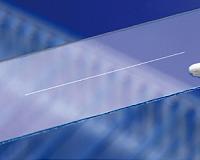 |
Washington (AFP) Nov 29, 2010 A senior US official called China's growing innovation a "Sputnik moment" that should spur the United States to ramp up investment in clean energy, despite a shift in Washington on climate change. Energy Secretary Steven Chu likened a series of Chinese milestones -- including the development of the world's fastest supercomputer -- to the Soviet Union's landmark 1957 satellite that led the United States into the Space Race. "America, I am optimistic, will wake up and see the opportunity. And when it does, it still has the greatest innovation machine in the world," Chu said in a speech entitled "Our New Sputnik Moment." Chu said the United States still concentrated on research in areas such as computers, defense and pharmaceuticals but that its funding for energy innovation was paltry. By contrast, China, the world's largest emitter of carbon blamed for global warming, is working to build the world's most expansive high-speed rail network and has developed technology for the highest-efficiency coal plants. "America still has the opportunity to lead in a world that will need essentially a new industrial revolution to give us the energy we want inexpensively but carbon-free," Chu said. "But I think time is running out," said Chu, a Nobel Prize-winning physicist. Chu, however, will enjoy little political leeway when he heads to Cancun, Mexico, where representatives of more than 190 countries on Monday opened two weeks of talks on drafting a new global treaty to stem climate change. President Barack Obama last year went to the climate summit in Copenhagen where he pledged US action to curb carbon emissions along with assistance for poor countries hardest hit by rising temperatures. The rival Republican Party, which swept November 2 congressional elections, is strongly opposed to a so-called "cap-and-trade" plan to require industry to cut carbon. Many Republicans argue that it is too costly in uncertain economic times, while some contest the science behind climate change. Chu countered that climate action would benefit the economy by opening up a new field in green technology. But Chu also defended potential costs. He likened climate skeptics to homeowners who are repeatedly told to change wiring but keep looking for electricians to tell them they do not need to. "Do you actually go and you say, well, okay, that's a threat but I think it's more cost-effective -- I just make sure my fire insurance is up-to-date?" he said. Two recent studies found that China's investment in green technology has outpaced that of the United States. But China has held firm in rejecting a treaty that would legally require it to cut carbon emissions. The United States, backed by other developed nations, has insisted on a binding treaty, believing it is crucial to ensure global action -- and to win over support in Washington. The Kyoto Protocol, which the United States rejected, asks only wealthy nations to cut carbon emissions. The requirements run out at the end of 2012. The dispute has been tense at times. At UN-backed talks in October, China's chief climate negotiator, Su Wei, said the United States was like a "pig looking in a mirror" and finding itself beautiful. Vaughan Turekian, chief international officer of the American Association for the Advancement of Science, said that the political dynamics have barely changed more than a decade after the Kyoto negotiations. "The current climate summit process is unlikely to produce a global treaty that includes the United States as a signatory, let alone one that would stand any chance of being ratified by 67 senators," he said.
Share This Article With Planet Earth
Related Links Powering The World in the 21st Century at Energy-Daily.com
 Conductor Paths For Marvelous Light
Conductor Paths For Marvelous LightAachen, Germany (SPX) Nov 24, 2010 Organic light-emitting diodes are seen as the basis for a new generation of lamps: Large-area lamps that can be randomly shaped and fl exibly integrated into interior design. But the "illuminated glass" is still very expensive. Researchers want to optimize the lamps of the future and reduce the price by a new manufacturing process. A short push on the light switch - and the whole ceiling l ... read more |
|
| The content herein, unless otherwise known to be public domain, are Copyright 1995-2010 - SpaceDaily. AFP and UPI Wire Stories are copyright Agence France-Presse and United Press International. ESA Portal Reports are copyright European Space Agency. All NASA sourced material is public domain. Additional copyrights may apply in whole or part to other bona fide parties. Advertising does not imply endorsement,agreement or approval of any opinions, statements or information provided by SpaceDaily on any Web page published or hosted by SpaceDaily. Privacy Statement |